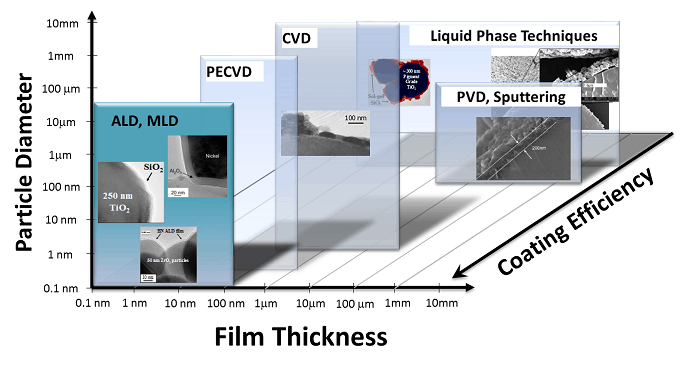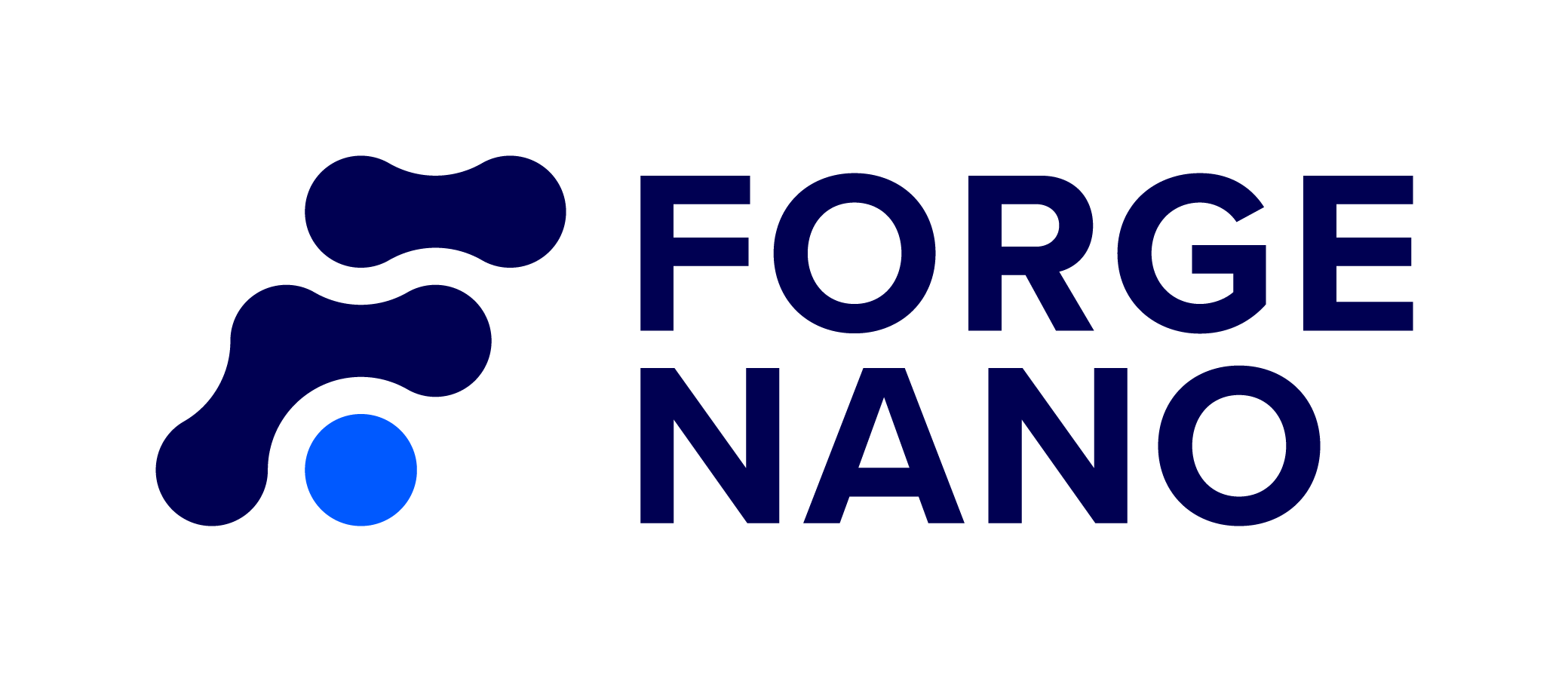A nano-scale coating is the application of nanostructures on particles to provide various benefits. Nano-scale coatings can make surfaces water-repellent, less susceptible to degradation, more energy efficient, etc., without detracting from the primary function of the underlying material. There are both liquid (Sol-Gel, Co-precipitation) and gas (CVD, MLD, ALD) phase processes that can be used to deposit the various types of nanostructures. This blog post will discuss gas-phase deposition processes: chemical vapor deposition (CVD), atomic layer deposition (ALD) and molecular layer deposition (MLD).

Chemical Vapor Deposition (CVD)
Chemical vapor deposition is the most common gas-phase technique used to deposit a nano-scale coating on a substrate. Typically, the substrate is exposed to two volatile precursors in a reaction chamber and is operated at a high enough temperature to induce chemical reactions between the precursors in the gas phase, and the precursors at the substrate surfaces.
The chemical reactions that occur at substrate surfaces create a strong bond between the coating material and the surface, and the presence of several precursors in the chamber provides for the rapid deposition of a solid thin or thick film coating. CVD is useful for rapidly depositing nano-scale coatings of functional coating layers onto surfaces. However, CVD presents a fundamental trade-off in that process speed typically sacrifices precision and uniformity.
Atomic Layer Deposition (ALD)
Atomic layer deposition is an analog of CVD, which can provide the precision and uniformity sacrificed by its predecessor. ALD uses a “pulsed” process, which introduces two reactive precursors into the process chamber consecutively, as opposed to simultaneously. This process variation of CVD is useful for building successive layers of film on the substrate, providing chemically bonded coatings, yet with angstrom-level thickness and precision.
The ALD process results in a uniform coating at an atomically specified thickness. It is a highly controlled method that is beneficial when depositing precise and uniform nano-scale coatings, and it has excellent repeatability. ALD typically runs at lower temperatures than CVD, which is favored when working with fragile substrates or those with low melting/deformation temperatures. Historically, the consecutive nature of the ALD process has led to slower processes that increase embedded variable costs relative to CVD, however the high-efficiency precursor utilization leads to substantially lower raw materials costs.
When applying ALD to particles, which have higher surface areas and require more precursor to fully saturate the surfaces, this time-based limitation has been a large barrier to commercialization, resulting in fantastic performance results that have been stranded in the lab or benchtop scale. Forge Nano has been pioneering methods to overcome the time-based limitation imposed by ALD, and has been the first to demonstrate a scalable ALD system for upgrading powders and particles. Forge Nano has patented its particle ALD manufacturing systems that are now producing over 1,000 kg of materials per day for the Li-ion battery market (US 9,284,643 and US 9,546,424).
Molecular Layer Deposition (MLD)
The molecular layer deposition process is a subset of ALD, as it also deposits nano-scale coatings in consecutive layers to provide a uniform finish, but the difference with MLD is that an additional organic molecular component is also embedded within the films. The result of this chemistry variant is that hybrid organic-inorganic or full polymer films (deposited one monomer unit at a time) can be produced using MLD.
Forge Nano’s scalable manufacturing systems are also well-suited to manufacture these hybrid polymeric coatings at scale. The organic thin films created using MLD can optimize the performance of photonic/electronic devices and can provide new functions and benefits that cannot be achieved with ceramic ALD coatings alone. Hybrid coatings have the potential to combine the best properties of two entirely different chemistries, resulting in a dramatic expansion of the nano-scale coatings ‘toolkit’, to maximize value for specific applications. Forge Nano has exclusively licensed technology for MLD coatings from the University of Oslo (US 8,124,179)
Strategic Applications
Forge Nano is creating value for its partners in a variety of markets, such as energy storage (e.g. batteries and ultracapacitors), energy conversion (e.g. catalysts), and wide array of industrial materials (e.g. coated glassy, metallic and ceramic powders). Forge Nano has been designing coated catalysts using ALD for petrochemicals, biofuels and supporting shale gas conversion and clean coal technologies. With a focus on high efficiency and low cost, the catalysts reduce energy and catalyst consumption, increase product yields, and are ultimately creating jobs by reducing waste. ALD is a popular choice for coating lithium-ion batteries to protect and enhance the electrode materials. Forge Nano’s coatings on these batteries have increased battery lifetime by as much as 300%. Forge Nano has built a robust patent portfolio providing itself and its customers with full protection and coverage for ALD and MLD-enabled battery material manufacturing, compositions and applications. With a focus on high efficiency and low cost, the catalysts reduce energy and catalyst consumption, increase product yields, and are ultimately creating jobs by reducing waste.
ALD is a popular choice for coating lithium-ion batteries to protect and enhance the electrode materials. Forge Nano’s coatings on these batteries have increased battery lifetime by as much as 300%. Forge Nano has built a robust patent portfolio providing itself and its customers with full protection and coverage for ALD and MLD-enabled battery material manufacturing, compositions and applications.
Click here to contact Forge Nano for more information about our range of precision nano-scale coating applications and manufacturing systems.
